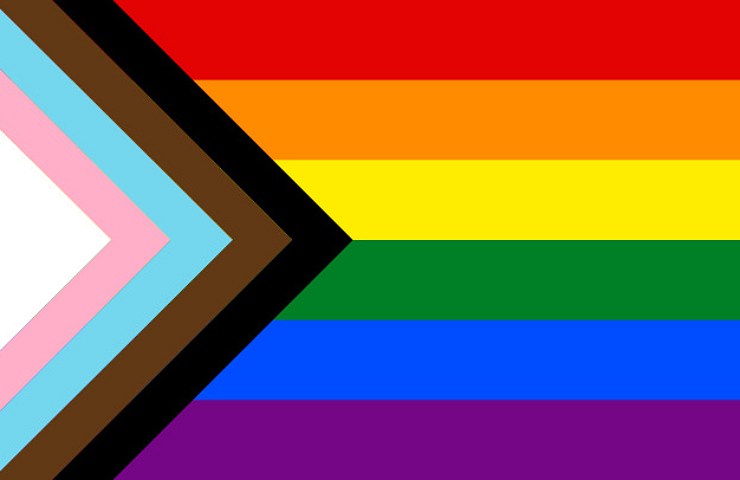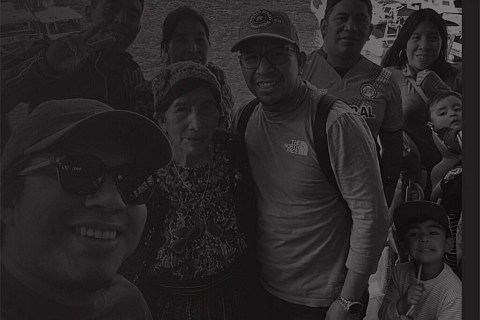The first time I was exposed to queer cinema was through “Blue is the Warmest Colour” at the ripe age of 14.
I settled down in my bed to watch the French film on my mom’s laptop, using the family Netflix account. I stared wide-eyed at the first mainstream depiction of a queer female couple I had ever seen. At the start of the movie, I relished the idea that maybe someday I could find a nice blue-haired butch to take me in and show me the ropes. Then I was hit with a sex scene between the main couple.
To many, including the cast, this scene became the focus of the movie. Not only is the scene over six minutes, making it almost absurdly long for a big-screen film, but the scene alone was filmed over 10 days, and directed by a man. It was a scene that informed young queer people like myself and heterosexual audiences what sapphic sex was like.
This specific scene, along with more sprinkled throughout the film, made the bold claim that sex is the focus of queer relationships and that queer sex is an acceptable facet of relationships that are otherwise seen as perverse to society.
But the depiction of queer sex in “Blue is the Warmest Colour” is not simply a bad egg from a good hen. It’s a bad egg, from a bad hen, in a bad coop, raised by a bad farmer. Oversexualization of queer folks in the media runs rampant and gives both LGBTQ+ and heterosexual people incorrect, damaging and confusing pictures of what the expectations of queer relationships are.
Oversexualization (also referred to as hypersexualization) is defined by the presence of sex-driven relationships within media. In regards to queer relationships, one of the most common examples is the consumption and creation of lesbian porn by and for heterosexual men.
While many argue that “all representation is good representation,” the facts of the matter are much more nuanced. The oversexualized presence of queer people within media leads to confusing views on what it really means to be queer.
With lesbianism in mind, one scholar states that there are six types of commonly stereotyped lesbians. Those being: the hot lesbian, the out lesbian, the closeted lesbian, the butch lesbian, the feminine lesbian and the bisexual lesbian. While there are certainly lesbians who fit these stereotypes, the lesbian experience is different for everyone who identifies as such.
Drew Gregory, a trans-lesbian and writer for Autostraddle wrote about her feelings towards the trans-lesbian representation in the popular show “Euphoria” in a piece aptly named “I love Euphoria and I hate it.”
“It’s devastating to watch a show that is both everything I want to see on TV and everything I don’t want to see on TV all in one,” Gregory said.
Hunter Schafer’s character, Jules, is a trans teen who develops a romance with Zendaya’s character, Rue. The trans experience is one that is not commonly represented, and even less so is that of a trans woman involved in a WLW (woman-loving-woman) relationship. According to Gregory though, this representation fell extremely flat.
On one hand, Jules’ relationship with Rue portrays a dynamic very rarely shown on screen. But, on the other, the show goes back and forth between insinuating that Jules’ sexual relationships with men in the show affirm her womanhood, to claiming that the men who have sex with Jules in the show are secretly gay—implying that Jules is not a woman.
But, on the other, the show goes back and forth between insinuating that Jules’ sexual relationships with men in the show affirm her womanhood, to claiming that the men who have sex with Jules in the show are secretly gay—implying that Jules is not a woman.
In another moment, Jules hooks up with a man on Grindr who is looking for “twinks and femboys.” Two things that Jules is not.
“Euphoria” boasts an audience of over 2.4 million viewers. Many may be seeing a trans character for the first time, and they are being fed with the idea that trans women are not women, or that they should be seen as “femboys” or “woman-lite.” Through the first season, Jules’ character is developed heavily through these sexual encounters, boldly claiming that Jules’ identity as a trans woman is defined by her sexual experiences leaving audiences to draw the incorrect conclusion that sexual orientation and gender identity are defined by sex.
As illustrated by Jules’ character, over-sexualization is more than just objectification, but it can also be fetishization (as in Jules’ relationships with men who do not affirm her identity), and often includes queer people being depicted as sexual predators. Norman Bates in “Psycho,” Buffalo Bill in “Silence of the Lambs,” Phil Burbank in “The Power of the Dog” and Oliver in “Call Me By Your Name” are some noteworthy examples of predatory queer characters.
Norman Bates dresses up as his late mother while killing his victims, Buffalo Bill is a trans murderer, Phil Burbank attempts to groom a young boy, Oliver succeeds in doing so. All of these characters reinforce the somewhat mainstream idea that queer people are something to be feared.
Karamo Brown, who is not only a member of Queer-Eye’s Fab 5 and a pillar for the LGBTQ+ community, but also a psychotherapist and licensed social worker, called “Call Me By Your Name” “problematic as f—.”
“I think to myself, ‘If that was an older man or a perceived college student who looked that much older with a 16 or 17-year-old girl, we would have all had a hissy fit,’” he said to INSIDER. “We would have recognized that this is a problem. But for some reason, because it was two men, we’re just like, ‘Oh, well this is just exploration.’”
And it is true. Cheyenne Montgomery of the Boston Globe called “Call Me By Your Name” a “dishonest, dangerous film.”
“[It] isn’t about an older man and a younger man. It falsely romanticizes an exploitative relationship between a grown man and a teenager. These manipulative relationships cause lasting damage, as I know from my own experience,” Montgomery said. “This film has the potential to cause real harm by normalizing this kind of sexual predation. It could be particularly damaging for LGBT youth, who are already at high risk for depression and suicide.”
I’m sure many would agree that the glamorization of abusive relationships is inherently problematic. But the issue is not simply that queer youth are already at a higher risk of suicide. NPR released an interview with a gay man who told his story of downloading the gay dating app, Grindr, at only 13 years old. The man, German Chavez said he just wanted to learn about gayness, because in his house the word ‘gay’ was “like cancer.”
“‘My intentions were so pure and holy. But they were just like to know, like, about gay men. What do gay men eat? What do gay men like? How is it, like, growing up gay?,’” Chavez said.
He would lie about his age on the app, saying that he was 18. This is not an uncommon phenomenon. In fact, a 2018 Northwestern University study found more than half of sexually active gay and bisexual adolescent boys found sexual partners on Grindr.
Many queer youths turn to dating sites because there are not many “real-life” spaces for queer people to meet each other, especially at such a young age. Thus, some queer kids find themselves lying about their age and searching for older queer people to “show them the ropes,” but what they get is not that simple.
With these facts in mind, “Call Me By Your Name” becomes all the more sinister. As Montgomery put it: No, “Call Me by Your Name” isn’t a radical, brilliant piece of art. We need to call it by its name. That name is abuse.”
Much of this problem can be attributed to the fact that queer people are not given the ability to pioneer their own stories. Oftentimes, popular queer stories are written, directed and/or acted by straight people.
To call “Euphoria” back into question—cis, straight, 40-year old Hollywood-born and raised white man Sam Levinson wrote the entire first season alone, one of the few showrunners across all television networks to write without a writers room.
This decision is especially interesting considering the fact that the main characters of the show include a Black teenage queer drug addict, a teenage queer trans woman and a teenage Latina. There would likely be less questionable and downright problematic representation if the people with stories like the ones Levinson was writing were actually able to share their experiences.
“Blue is the Warmest Color” was directed by a straight man. “Danish Girl” is a film based on the true story of a trans woman. The trans woman in the film is played by Eddie Redmayne, a cis man. In “Brokeback Mountain,” the two queer characters are played by two straight men. In “Call Me By Your Name,” it is the same.
When characters are written, directed, and played by people who do not truly understand the experience they are supposed to embody, the queer experience becomes one-dimensional. This creates further inaccuracies and dumbs relationships down to be about the sexual aspects instead of anything else. And not only that, but when queer characters are played by straight actors, it further emphasizes the fictional aspects of the story, leaving the reality of queerness in question.
So, when I sat down to watch “Blue is the Warmest Color” at 14, I was not prepared for the psychological impact on me or the fact that I would subconsciously view it as the blueprint for my future relationships. As a lesbian woman, I can say that blueprint only works to create failed relationships with unrealistic expectations.
The reality is that the LGBTQ+ experience is nuanced, it is not defined by sex nor is it inherently predatory. Viewing media that claims such is a huge barrier to progress within the community. It is absolutely essential to view realistic queer media for both LGBTQ+ and straight people in order for society to have a better understanding of what it means to be queer.
Some of my personal recommendations would be “Pariah,” a film about a young stud navigating her relationship with religious parents, “Giovanni’s Room,” a book about the troubles of a man who falls in love with a bartender in Paris, “Portrait of a Lady on Fire,” a film about an artist and her painting subject who fall in love, and “Trixie and Katya’s Modern Guide To Womanhood,” a comedic examination of womanhood written by two drag queens.
Through the consumption of more realistic and representative media, the creation of harmful media like “Blue is the Warmest Color” is discouraged, and it leaves room for real stories to be told.





Recent Comments